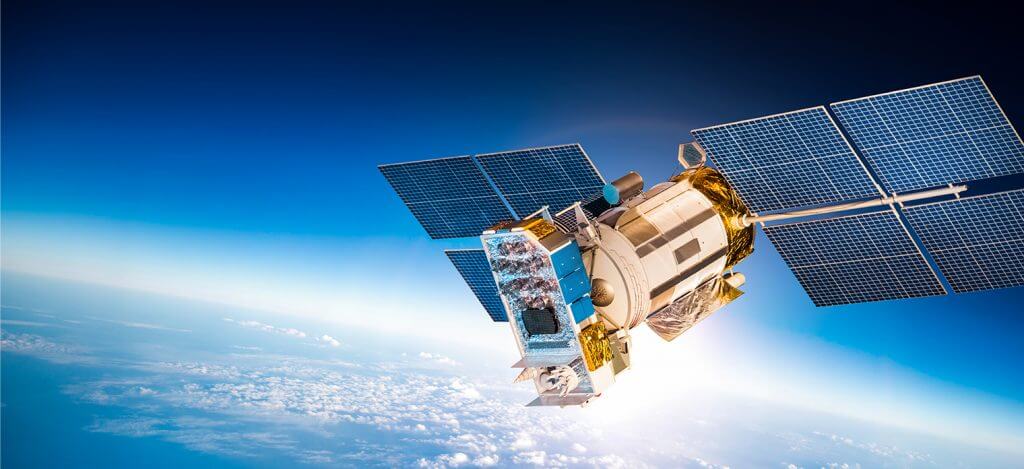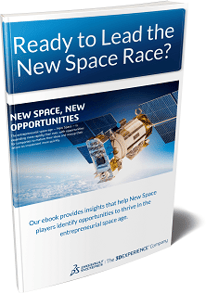New Space – the commercial space industry driven by private organizations – is making giant leaps in space tourism, exploration and satellite technology. Europe, the USA, China, India and Israel are among the countries that stand to gain as innovative projects promise benefits such as insights into weather patterns and climate change, better communications networks, and geographical data analytics to help farmers improve crop yields.
Start-ups and small to medium sized enterprises (SMEs) are disrupting the industry and capturing investors’ imagination. In the first half of 2020 alone, investors backed space companies to the tune of $12.1 billion, with $303 million targeting early-stage projects. Rapid innovation is essential to keep up with market demand, and it’s imperative to get it right first time.

Reprint of blog by David Ziegler
Light-speed innovation
Satellites illustrate the need to accelerate innovation. A growing number of satellites are reaching the skies, packing increasingly complex capabilities into ever smaller hardware. For instance, SpaceX’s Starlink satellite constellation will link thousands of small satellites with ground-based transceivers to provide global internet access. Meanwhile Lockheed Martin’s Pony Express 1 cubesat mission promises space-based artificial intelligence, data analytics, cloud computing and advanced satellite communications. And Spanish company Zero 2 Infinity is developing versatile balloon-based systems for lower cost, more sustainable small satellite (smallsat) launches.
An annual average of 1,000 smallsats is expected to be launched through the 2020s. Experts also predict that the global nanosatellite and microsatellite market will grow by 21.3% until 2025. To meet rapidly changing market needs, satellite engineers must be able to test, validate and demonstrate their ideas quickly before moving to physical production. Using simulation technology to model their ideas enables faster, more efficient innovation with less risk. And it ensures that the satellite that launches is the right one for the job.
Space-age sustainability
Delivery and launch of the product is only the start of a lifecycle that must now have sustainability built in. Decades of space exploration have left an estimated 129 million debris objects in orbit and today’s innovators are tasked with reducing that junk without adding more. Longer product lifespans, reusable components and efficient operation are all essential elements, from the design and production of the product through to operation and post-mission phases.
 Simulating their ideas and running what-if scenarios gives them the end-to-end visibility to achieve those goals.
Simulating their ideas and running what-if scenarios gives them the end-to-end visibility to achieve those goals.
Modelling a rocket’s trajectory, for instance, can help to maximize its efficiency and safety.
Virtual models of materials and components can be tested to find ways to reuse them. And using simulation to visualize and plan the orbit of a satellite can help to optimize its lifespan and minimize orbital debris.
A collaborative core
Collaboration is at the core of New Space. As start-ups and SMEs continue to disrupt the industry, it’s essential that they can work seamlessly across disciplines, time zones, markets and geographies. A virtual model, built on a single data platform, enables them to do that. Designers can work together in real time, modelling complex systems to see exactly how they will operate in different orbits and atmospheric conditions. As they perfect their design, they can use the model to collaborate with suppliers and optimize production, keeping the project on track. The result is more agile, efficient innovation across the value chain, with potential problems resolved before physical production begins.
Wherever the New Space age takes us – from satellite-enabled apps to tourist trips or missions to explore distant planets – this ability to visualize and innovate together is the key to enabling a sustainable future on Earth and beyond.
_______________________________________
Discover how Desktop Engineering can help New Space companies achieve fast, sustainable innovation. Get in touch below or request the eBook >>
.png?width=139&height=70&name=DTE-Logo%20(4).png)



